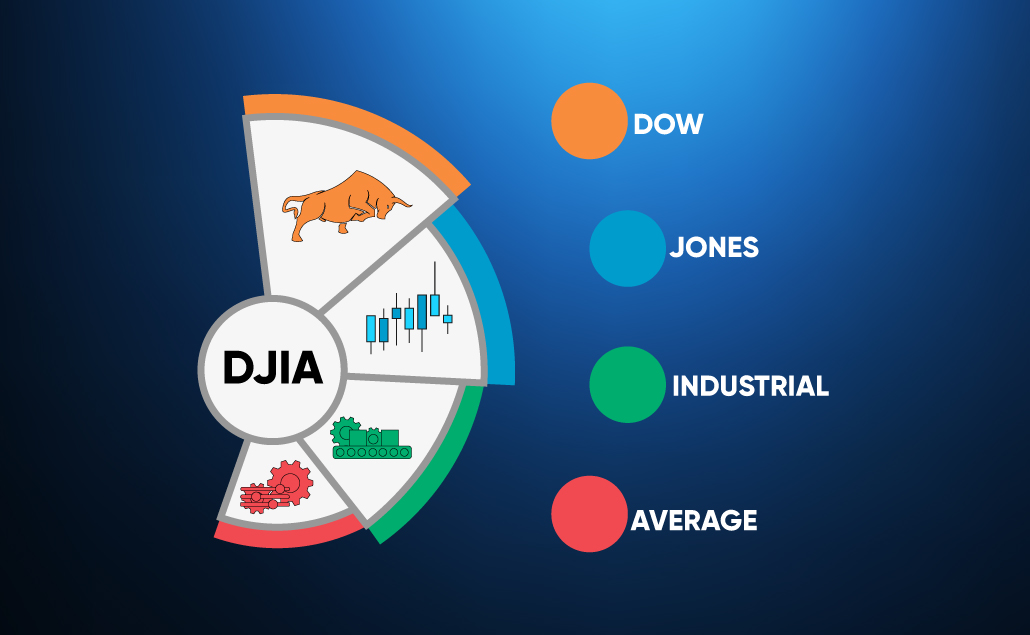The Dow, or the Dow Jones Industrial Average (DJIA), is an important price-weighted index that is used to track the stock performance of 30 of the largest publicly-traded companies in the United States. The Dow has been in existence for more than a century —it was first published on May 26, 1896— and provides a measure of the overall health of the U.S. economy.
As the oldest U.S. stock market index, the Dow is not only a gauge of the performance of major U.S. but also a reflection of the confidence of investors in the world’s largest economy. The Dow’s movements have a significant influence on global markets and related instruments. It is closely watched by economists and investors around the world, as it is one of the most closely followed market indicators.
The Dow is often used as a benchmark for other indices, such as the S&P 500 and the NASDAQ. Although each index has its weighting criteria and tracks different categories of stocks, they all provide insight into the relative performance of U.S. stocks. In addition, when the Dow moves up or down it is often seen as a reflection of the sentiment of the entire market. This is why it is often referred to as the “global market barometer.”
Who are the Dow members?
The Dow is composed of 30 of the largest publicly-traded companies in the United States. These stocks are selected by the Editors of The Wall Street Journal and reflect the market’s most widely traded companies.
The Dow’s current members consist of Apple Inc., Boeing Co., 3M Co., American Express Co., AT&T Inc., Caterpillar Inc., Chevron Corp., Cisco Systems Inc., Coca-Cola Co., Dow Inc., Exxon Mobil Corp., Goldman Sachs Group Inc., Home Depot Inc., Intel Corp., International Business Machines Corp., Johnson & Johnson, JPMorgan Chase & Co., McDonald’s Corp., Merck & Co., Microsoft Corp., Nike Inc., Pfizer Inc., Procter & Gamble Co., United Technologies Corp., Unitedhealth Group Inc., Visa Inc., Walgreens Boots Alliance Inc., Walmart Inc., and Walt Disney Co.
Because the Dow is price-weighted, the companies that are most expensive when divided by the stock’s current price have the most influence on the index’s movements.
How is the Dow calculated?
The Dow is calculated using a price-weighted average formula. This formula takes the sum of the closing prices of each Dow component divided by the Divisor and then multiplied by the number of outstanding stocks.
The Dow Divisor is the number used to make all the calculations of the DJIA. It is currently 0.14602128057775 and is adjusted whenever the composition of the DJIA changes or there is a stock split or dividend issued. The Dow is recalculated every 15 seconds during trading hours and uses the last sale price at the time of calculation.
The DJIA is a price-based index and is not adjusted for the effects of inflation, although many other stock market indexes are. This means that the value of the Dow moves with the prices of stocks rather than indicating any changes in the actual value of the company’s assets.
What is the difference?: The Dow VS S&P 500
The Dow and the S&P 500 are the two most closely watched stock indices in the U.S. Both are market-capitalization-weighted indexes and track the performance of U.S. companies. The Dow is composed of 30 of the largest and most actively-traded stocks in the country, while the S&P 500 includes 500 of the largest U.S. companies.
The Dow is price-weighted, meaning the companies with the highest prices have the most influence on the Dow’s performance. The S& P 500, on the other hand, is market-capitalization weighted, meaning that each company’s influence on the index is determined by its market value and the number of outstanding shares. The Dow is updated more frequently than the S&P 500 and reflects the sentiment of investors in the overall U.S. market. The S&P 500 focuses on larger, more established companies and is seen as a more reliable and accurate measure of the stock market’s performance.
What is the difference?: The Dow VS NASDAQ Stock Index
The Dow and the NASDAQ are both stock indices that measure the performance of U.S. stocks, but they differ in many ways. The Dow is composed of 30 companies and is a price-weighted index, while the Nasdaq is composed of over 3,800 companies and is a market-capitalization-weighted index.
The NASDAQ is composed of more tech-focused companies and is seen as a more accurate measure of the performance of the tech sector. As the largest electronic stock market in the world, the Nasdaq is closely watched for the performance of the technology sector.
Related Articles
Disclaimer
Eurotrader doesn’t represent that the material provided here is accurate, current or complete, and therefore shouldn’t be relied upon as such. The information provided here, whether from a third party or not, isn’t to be considered as a recommendation; or an offer to buy or sell; or the solicitation of an offer to buy or sell any security, financial product or instrument; or to participate in any particular trading strategy. We advise any readers of this content to seek their own advice.


